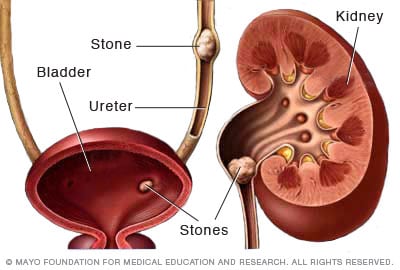Exactly how to Distinguish Between Kidney Stones vs UTI: Trick Aspects and Diagnostic Tips
Comprehending the Key Distinctions In Between Kidney Stones and Urinary System System Infections: A Thorough Review for Individuals
Recognizing the distinctions between kidney stones and urinary tract infections (UTIs) is important for patients who might be experiencing similar signs yet face vastly different health difficulties. As we check out these vital aspects, it comes to be clear that recognizing the one-of-a-kind qualities of each condition can greatly influence person results.
Review of Kidney Stones
The development of kidney stones, a excruciating and frequently incapacitating condition, emphasizes the important relevance of preserving kidney wellness. The key kinds of kidney stones consist of calcium oxalate, calcium phosphate, uric acid, struvite, and cystine stones, each with distinct causes and danger variables.
Several variables contribute to the formation of kidney stones. In addition, metabolic problems and certain medical conditions may incline individuals to stone formation.
Symptoms of kidney stones can consist of severe flank hematuria, nausea or vomiting, and discomfort, which commonly motivate urgent clinical assessment. Therapy alternatives vary, ranging from boosted liquid consumption and dietary modifications to medical treatments such as lithotripsy or surgical elimination, relying on the dimension and place of the stones. Recognizing these facets is crucial for efficient avoidance and monitoring.
Overview of Urinary System Tract Infections
Urinary system tract infections (UTIs) represent an usual yet considerable wellness worry, affecting millions of individuals yearly. These infections occur when microorganisms get in the urinary system, which includes the kidneys, ureters, bladder, and urethra.
The threat aspects for establishing a UTI include sex, certain sorts of birth control, urinary retention, and a background of previous infections. Individuals with damaged body immune systems or pre-existing problems, such as diabetes mellitus, may likewise go to higher threat. UTIs can be categorized right into 2 primary kinds: uncomplicated and difficult. Uncomplicated UTIs are typically restricted to the bladder and are more common in healthy individuals, while challenging UTIs may entail the kidneys and occur in those with underlying health concerns.
Prompt diagnosis and treatment are vital to protect against complications, such as persistent infections or kidney damage (Kidney Stones vs UTI). Usually, UTIs are treated with anti-biotics, and preventive actions can be used for those with frequent events
Usual Signs And Symptoms Contrast
Symptoms of urinary tract infections and kidney stones can often overlap, leading to confusion in diagnosis. In comparison, kidney stones have a tendency to cause severe, sharp pain that radiates from the back to the reduced abdomen and groin, usually defined as colicky discomfort.
Furthermore, UTIs may be come with by fever and chills, particularly in a lot more extreme cases, while kidney stones can lead to nausea or vomiting and vomiting due to extreme pain. While pain during peeing is a characteristic of UTIs, kidney stones usually present with even more acute discomfort episodes, which might go and come.
Medical Diagnosis Techniques
How can medical care experts properly differentiate between kidney stones and urinary system infections? The diagnostic process begins with an extensive case history and a thorough review of the patient's signs and symptoms. Clinicians frequently execute a checkup, which may reveal tenderness in the abdominal area or flank area, directing the analysis pathway.
Lab examinations play a critical role in identifying in between these two conditions. Kidney Stones vs UTI. A urinalysis can recognize the presence of blood, crystals, or microorganisms, which recommended you read are indicative of either problem. In cases of urinary system infections, the urinalysis may reveal a substantial visibility of leukocyte and nitrites, while kidney stones may offer with particular crystals
Imaging research studies, such as abdominal ultrasound or computed tomography (CT) checks, are essential for envisioning kidney stones. These imaging techniques make it possible for doctor to assess stone dimension, location, and possible obstructions in the urinary system system. In comparison, urinary tract infections typically do not call for imaging unless problems are suspected.
Together, these diagnostic techniques encourage health care professionals to properly diagnose and set apart in between kidney stones and urinary system tract infections, ensuring that clients obtain suitable treatment and administration.
Therapy Options and Avoidance
While both kidney stones and urinary tract infections (UTIs) call for prompt treatment, their management techniques vary considerably.
The treatment for kidney stones often involves pain administration, hydration, and in some cases, medical treatments such as extracorporeal shock wave lithotripsy (ESWL) or ureteroscopy to break or eliminate down stones. Individuals are regularly advised to boost liquid consumption to help with stone flow and reduce reoccurrence. Nutritional adjustments may likewise be required, depending upon the stone kind.
In comparison, UTIs are mostly treated with anti-biotics to eliminate the bacterial infection. The particular antibiotic suggested depends on the microorganisms identified and neighborhood resistance patterns. Extra measures, such as boosted liquid intake and urinary analgesics, might assist reduce symptoms.
Avoidance strategies differ also; for kidney stones, keeping ample hydration and sticking to dietary constraints can be efficient. For UTIs, precautionary approaches consist read the article of appropriate health practices, urinating after intercourse, and potentially prophylactic anti-biotics for recurring infections. Comprehending these therapy and prevention modalities is vital for effective management and to reduce the risk of complications connected with both problems.
Conclusion

Recognizing the differences between kidney stones and urinary system infections (UTIs) is essential for patients who might be experiencing comparable symptoms yet deal with greatly different health challenges. navigate to this site The primary kinds of kidney stones include calcium oxalate, calcium phosphate, uric acid, struvite, and cystine stones, each with distinctive causes and danger variables.
